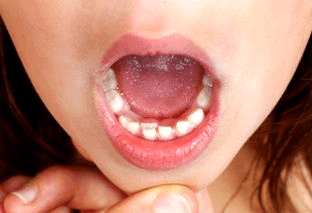OCCLUSAL CHARACTERISTICS OF THE PRIMARY DENTITION AMONG A SAMPLE OF YEMENI PRE-SCHOOL CHILDREN
Keywords:
Occlusal characteristics, primary dentition, pre-school children, YemenAbstract
Objective: The occlusal features change dynamically in the growing children and any disruption in the complex craniofacial growth process may lead to malocclusion, which is a major concern for the pediatric community because of its effects on dental function and beauty, as well as on the child's psyche. The aim of the present study was to study the prevalence of different occlusal traits in the primary dentition of the randomly selected pre-school children from three to five years in the city of Sana’a, Yemen.
Methods: The study includes 1106 pre-school children subjected to a dental examination performed in the school premise, using the Foster and Hamilton criteria for occlusal traits. As well as inter- and intra-calibration tests were conducted for assessing the degree of agreeability.
Results: Results of the study showed that the Bilateral flush terminal molar relationship was found in 60%, bilateral mesial step in 27.9%, asymmetrical relationship in 8.5% and distal step in 3.5% of tested children. The Bilateral canine class I was detected in 62.8%, asymmetrical relationship (13.6%), class II (12.5%) and class III (11.1%). Normal over-jet (OJ) of 1-3 mm was identified in 39.2%, decreased OJ <1 mm (32.7%) and edge-to-edge (8.8%). Ideal over-bite (OB) of 1-50% was detected in 64.5% and increased OB of > 50% (19.7%).
Conclusion: In conclusion theBilateral flush terminal molar, class I canine relationships, normal overjet (OJ) of 1-3mm were the most commonly found sagittal occlusal traits in the current study. Ideal over-bite (OB) of 1-50% were identified in more than half of the children.

Peer Review History:
Received 7 December 2019; Revised 15 January 2020; Accepted 26 February; Available online 15 March 2020
Academic Editor: Dr. DANIYAN Oluwatoyin Michael , Obafemi Awolowo University, ILE-IFE, Nigeria, toyinpharm@gmail.com
, Obafemi Awolowo University, ILE-IFE, Nigeria, toyinpharm@gmail.com
Reviewer(s) detail:
Aya Mohammed Mohammed Essawy , MTI University- Mokattam, Egypt, aya.essawy@gmail.com
, MTI University- Mokattam, Egypt, aya.essawy@gmail.com
Dr. Nada Farrag , Misr International University, Egypt, Nada_Hazem87@hotmail.com
, Misr International University, Egypt, Nada_Hazem87@hotmail.com
Downloads

Published
How to Cite
Issue
Section

This work is licensed under a Creative Commons Attribution-NonCommercial 4.0 International License.









 .
.